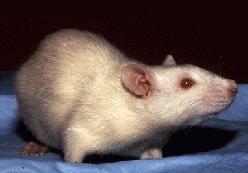|
Adult Stem Cell
Adult stem cells are undifferentiated cells, found throughout the body after development, that multiply by cell division to replenish dying cells and regenerate damaged tissues. Also known as somatic stem cells (from Greek σωματικóς, meaning ''of the body''), they can be found in juvenile, adult animals, and humans, unlike embryonic stem cells. Scientific interest in adult stem cells is centered around two main characteristics. The first of which, being their ability to divide or self-renew indefinitely, and secondly, their ability to generate all the cell types of the organ from which they originate, potentially regenerating the entire organ from a few cells. Unlike embryonic stem cells, the use of human adult stem cells in research and therapy is not considered to be controversial, as they are derived from adult tissue samples rather than human embryos designated for scientific research. The main functions of adult stem cells are to replace cells that are at risk ... [...More Info...] [...Related Items...] OR: [Wikipedia] [Google] [Baidu] |
Transmission Electron Microscopy
Transmission electron microscopy (TEM) is a microscopy technique in which a beam of electrons is transmitted through a specimen to form an image. The specimen is most often an ultrathin section less than 100 nm thick or a suspension on a grid. An image is formed from the interaction of the electrons with the sample as the beam is transmitted through the specimen. The image is then magnified and focused onto an imaging device, such as a fluorescent screen, a layer of photographic film, or a sensor such as a scintillator attached to a charge-coupled device. Transmission electron microscopes are capable of imaging at a significantly higher resolution than light microscopes, owing to the smaller de Broglie wavelength of electrons. This enables the instrument to capture fine detail—even as small as a single column of atoms, which is thousands of times smaller than a resolvable object seen in a light microscope. Transmission electron microscopy is a major analytical method i ... [...More Info...] [...Related Items...] OR: [Wikipedia] [Google] [Baidu] |
Laboratory Rat
A laboratory rat or lab rat is a brown rat of the subspecies '' Rattus norvegicus domestica'' which is bred and kept for scientific research. While less commonly used for research than mice (see laboratory mouse), rats have served as an important animal model for research in psychology and biomedical science. Origins In 18th century Europe, wild brown rats ran rampant and this infestation fueled the industry of rat-catching. Rat-catchers would not only make money by trapping the rodents, but also by selling them for food or, more commonly, for rat-baiting. Rat-baiting was a popular sport, which involved filling a pit with rats and timing how long it took for a terrier to kill them all. Over time, breeding the rats for these contests may have produced variations in color, notably the albino and hooded varieties. The first time one of these albino mutants was brought into a laboratory for a study was in 1828 for an experiment on fasting. Over the next 30 years, rats were u ... [...More Info...] [...Related Items...] OR: [Wikipedia] [Google] [Baidu] |
Subpopulation
In statistics, a population is a set of similar items or events which is of interest for some question or experiment. A statistical population can be a group of existing objects (e.g. the set of all stars within the Milky Way galaxy) or a hypothetical and potentially infinite group of objects conceived as a generalization from experience (e.g. the set of all possible hands in a game of poker). A common aim of statistical analysis is to produce information about some chosen population. In statistical inference, a subset of the population (a statistical ''sample'') is chosen to represent the population in a statistical analysis. Moreover, the statistical sample must be unbiased and accurately model the population (every unit of the population has an equal chance of selection). The ratio of the size of this statistical sample to the size of the population is called a ''sampling fraction''. It is then possible to estimate the '' population parameters'' using the appropriate sample ... [...More Info...] [...Related Items...] OR: [Wikipedia] [Google] [Baidu] |

